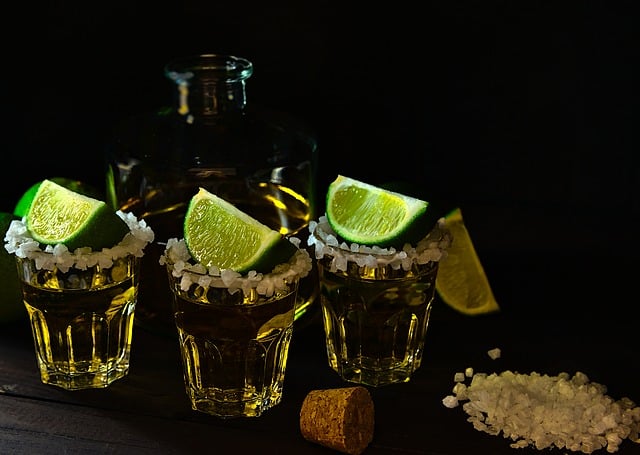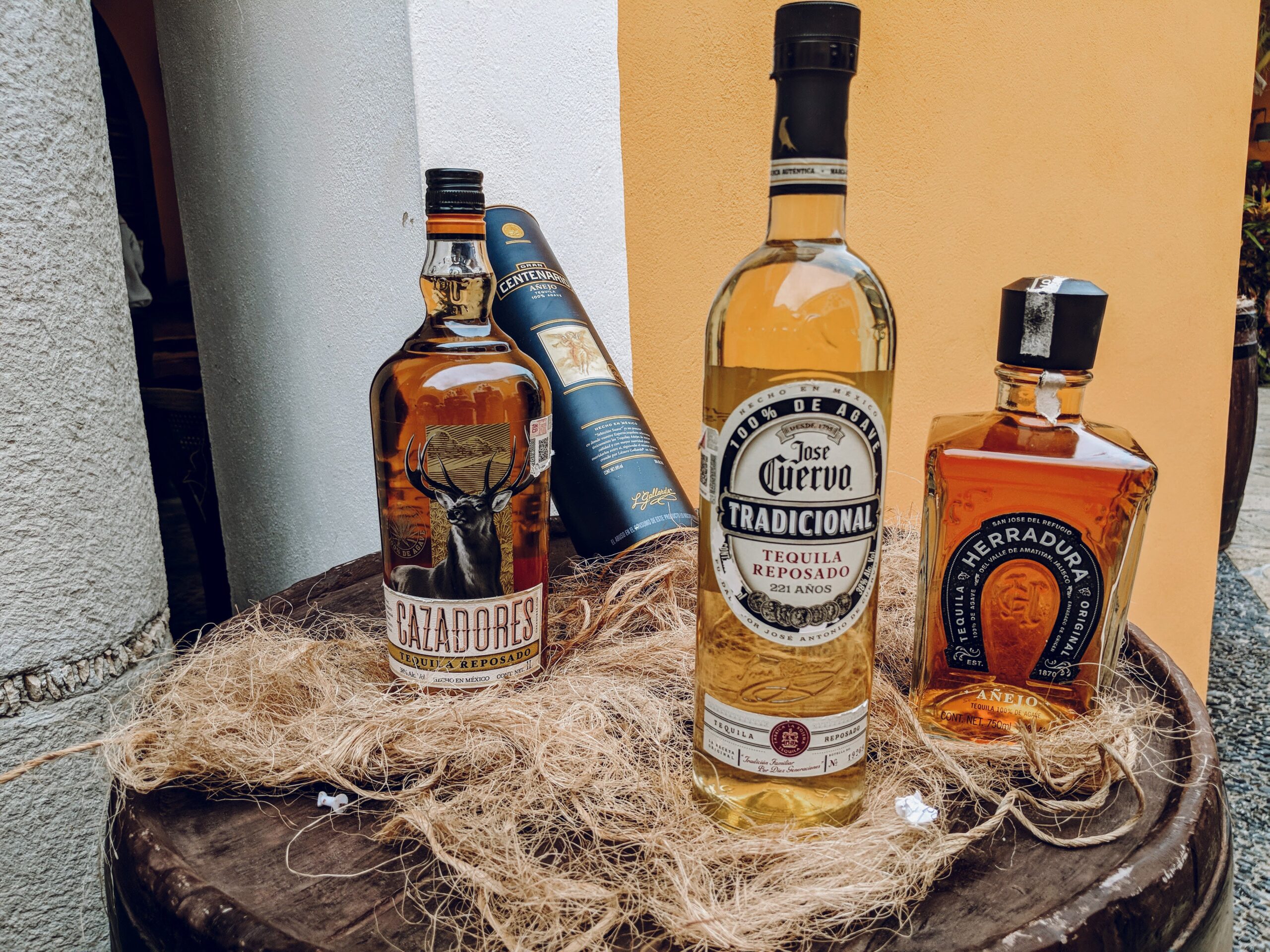
Tequila is a popular alcoholic beverage that originates from Mexico. It is made from the blue agave plant, which is native to the country. Tequila has a distinct flavor and is often enjoyed in cocktails or as a shot. Before attempting to make tequila at home, it is important to understand the process and equipment required.
While making tequila at home can be a fun and rewarding experience, it is important to note that the process can be dangerous if not done properly. It is recommended to take a course on distilling before attempting to make tequila at home. Additionally, it is important to follow all safety guidelines and regulations when making tequila. With the right equipment and knowledge, making tequila at home can be a fun and unique way to enjoy this popular beverage.
Table of Contents
Understanding Tequila
Tequila is a type of distilled spirit made from the blue agave plant, which is native to Mexico. It has a unique flavor profile that is influenced by a variety of factors, including the type of agave used, the region where it is grown, and the method of production.
Types of Tequila
There are several different types of tequila, each with its own unique flavor and aging process. The most common types of tequila include:
- Blanco: also known as silver or white tequila, is clear and unaged, with a bold and spicy flavor.
- Reposado: aged for a minimum of two months but no more than one year in oak barrels, has a smoother and more complex flavor than blanco.
- Anejo: aged for a minimum of one year but no more than three years in oak barrels, has a rich and mellow flavor with hints of vanilla and caramel.
- Extra Anejo: aged for a minimum of three years in oak barrels, has a deep and complex flavor with notes of wood and smoke.
Ingredients and Equipment
Making tequila at home requires specific ingredients and equipment. Here are the essential items needed to make tequila:
Blue Agave
The first and most important ingredient in making tequila is blue agave. This plant is native to Mexico and is the only type of agave that can be used to make tequila. The agave plant is harvested after it has reached maturity, which takes around 8 to 12 years. The leaves are removed, and the core, or piña, is extracted. The piña is then cooked to convert the starches into sugars.
Fermentation Vessels
After the piñas are cooked, they are mashed and mixed with water to create a sweet liquid called mosto. The mosto is then transferred to a fermentation vessel, where yeast is added to convert the sugars into alcohol. The fermentation process takes around 3 to 5 days, and the resulting liquid is called wash.
Distillation Equipment
The final step in making tequila is distillation. The wash is transferred to a still, which is a specialized piece of equipment used to separate the alcohol from the water and other impurities. The still is heated, and the alcohol vaporizes and rises to the top of the still, where it is collected and condensed back into a liquid. The resulting liquid is called tequila.
In addition to the above ingredients and equipment, other items such as a large pot or still, a thermometer, a hydrometer, a siphon or racking cane, and a storage container are also needed to make tequila at home. It is important to note that making tequila at home can be dangerous and should only be attempted by experienced distillers.
 photo credit: www.pexels.com
photo credit: www.pexels.com
Preparation Process
Harvesting the Agave
The first step in making tequila is harvesting the agave plant. The agave plant takes about 8 to 12 years to mature, and once it is ready, the leaves are cut off, leaving only the piña, the heart of the plant. The piñas are then transported to the distillery, where they will be cooked and processed.
Cooking the Agave
The next step is cooking the piñas. The piñas are placed in an oven and steamed for about 24 to 48 hours. This process converts the starches in the piñas into sugars, which will later be fermented into alcohol. The traditional method of cooking the piñas is in a brick oven, but some distilleries also use stainless steel autoclaves.
Extracting Agave Juice
After the piñas are cooked, they are crushed to extract the agave juice. The juice is then transferred to fermentation tanks, where yeast is added to begin the fermentation process. The fermentation process takes about 3 to 5 days, depending on the desired flavor profile. Once the fermentation is complete, the liquid is distilled to remove impurities and increase the alcohol content.
During the distillation process, the first distillate, called “ordinario,” is separated from the rest of the liquid. The ordinario is then distilled again to produce the final product, which can either be silver tequila or aged in oak barrels to produce reposado, añejo, or extra añejo tequila.
Fermentation
Tequila is made by fermenting the sugars found in the agave plant. This process converts the sugars into alcohol, which is then distilled to produce tequila. Here are the steps to follow for a successful fermentation:
Preparing the Wash
The first step in the fermentation process is to prepare the wash. To do this, the agave plant is harvested, and the piñas, or hearts, are crushed to extract the juice. The juice is then mixed with water and yeast to initiate fermentation. The yeast consumes the sugars in the juice and produces alcohol and carbon dioxide as byproducts.
It is important to use high-quality yeast that is specifically designed for tequila fermentation. Some popular options include Lalvin EC-1118 and Red Star DADY. The amount of yeast used will depend on the size of the batch being fermented, but a good rule of thumb is to use 1 gram of yeast per liter of wash.
Monitoring the Fermentation
Once the wash has been prepared, it is transferred to a fermentation vessel and left to ferment for several days. During this time, it is important to monitor the fermentation process to ensure that everything is going smoothly.
One way to monitor fermentation is to use a hydrometer to measure the specific gravity of the wash. The specific gravity will decrease as the sugars are consumed and the alcohol content increases. When the specific gravity stabilizes, it is a sign that fermentation is complete.
Another way to monitor fermentation is to observe the airlock on the fermentation vessel. As the yeast produces carbon dioxide, it will bubble through the airlock. When the bubbling slows down or stops completely, it is a sign that fermentation is complete.
It is important to maintain a consistent temperature during fermentation. The ideal temperature range for tequila fermentation is between 75°F and 80°F. If the temperature gets too high or too low, it can affect the flavor and quality of the final product.
Distillation
After the fermentation process, the next step in making tequila is distillation. This process involves heating the fermented liquid to separate the alcohol from the water and other impurities. The result is a clear, high-proof spirit that can be aged or bottled as silver (blanco) tequila.
First Distillation (Destrozamiento)
The first distillation is also known as “destrozamiento.” During this process, the fermented liquid is heated in a large copper still called “olla de barro” or “tina de cobre.” The still is heated with firewood or gas, and the liquid is boiled until the alcohol vaporizes and rises to the top of the still. The vapor is then cooled and condensed back into a liquid, which is collected in a separate container.
The first distillation produces a low-proof spirit called “ordinario,” which is around 20% alcohol by volume. This spirit is usually distilled a second time to increase its alcohol content and remove any remaining impurities.
Second Distillation (Rectification)
The second distillation is also known as “rectification.” During this process, the ordinario is heated in a smaller copper still called “alambique.” The still is heated with steam, and the liquid is boiled until the alcohol vaporizes and rises to the top of the still. The vapor is then cooled and condensed back into a liquid, which is collected in a separate container.
The second distillation produces a high-proof spirit called “tequila ordinario,” which is around 55% alcohol by volume. This spirit is usually diluted with water to bring its alcohol content down to around 40% for bottling as silver (blanco) tequila. Alternatively, it can be aged in oak barrels to produce reposado, añejo, or extra-añejo tequila.
Aging and Bottling
Tequila is typically aged in oak barrels to enhance its flavor and color. The aging process can take anywhere from two months to several years, depending on the desired outcome.
Aging Process
During the aging process, the tequila interacts with the wood of the barrel, which imparts flavors such as vanilla, caramel, and oak. The longer the tequila is aged, the more complex and smooth the flavor becomes.
Blanco tequila is unaged and has a clear color, while reposado tequila is aged in oak barrels for a minimum of two months, giving it a slightly golden hue. Añejo tequila is aged for a minimum of one year, and extra añejo tequila is aged for a minimum of three years.
When aging tequila at home, it is important to use a high-quality oak barrel that has been properly cured and charred. The barrel should be stored in a cool, dark place to ensure that the tequila ages properly.
Bottling
Once the tequila has reached the desired aging period, it is time to bottle it. The tequila should be carefully removed from the barrel and filtered to remove any impurities.
Clean and sterilized bottles should be used to ensure the quality and longevity of the homemade tequila. The bottles should be filled to the top and sealed tightly to prevent any air from entering and affecting the flavor.
Homemade tequila can be enjoyed immediately after bottling or stored for later use. It is important to note that the longer the tequila is stored, the smoother and more complex the flavor will become.
Frequently Asked Questions
What is the best yeast to use for fermenting agave into tequila?
The yeast used for fermenting agave into tequila is crucial to the final product’s taste and aroma. While there is no single “best” yeast for making tequila, most distillers use strains of Saccharomyces cerevisiae or Saccharomyces pastorianus. These yeasts are known to produce a clean, neutral flavor profile that allows the agave’s natural flavors to shine through.
What are the essential ingredients required for making tequila?
The essential ingredients for making tequila are agave, water, and yeast. However, some recipes may call for additional ingredients, like sugar, which can be added during the fermentation process to increase the alcohol content. It’s important to note that tequila can only be produced in certain regions of Mexico, and the type of agave used must be specified by law.
Can tequila be produced from any type of cactus or is there a specific plant?
Tequila can only be produced from the blue agave plant, which is native to Mexico. While other types of agave can be used to make similar spirits, they cannot legally be called “tequila.” Additionally, tequila can only be produced in certain regions of Mexico, as specified by law.
How long is the fermentation and distillation process for homemade tequila?
The fermentation and distillation processes for homemade tequila can vary depending on the recipe and equipment used. However, the fermentation process typically takes anywhere from three to ten days, while the distillation process can take several hours. It’s important to note that tequila must be distilled at least twice to meet legal requirements.
Is home distillation of tequila legal, and if so, what regulations must be followed?
Home distillation of tequila is illegal in most countries, including the United States and Mexico. In Mexico, only licensed distilleries are allowed to produce tequila, and they must follow strict regulations to ensure the safety and quality of the final product. It’s important to note that home distillation can be extremely dangerous and can lead to serious health risks.
Conclusion
It is important to note that making tequila at home requires patience and attention to detail. The fermentation and distillation process can take several days or even weeks, and it is important to monitor the temperature and ensure that the equipment is properly sanitized to avoid contamination.
Making tequila at home is a fun and rewarding experience that allows you to experiment with different flavors and create a tequila that is tailored to your taste preferences. By following the simple steps outlined in this article and using high-quality ingredients, you can create a delicious and authentic homemade tequila.
Related Posts
If you enjoyed learning about how to make tequila at home, you might also be interested in the following related posts:
- Is the “Scotch Whisky Regions” classification still relevant?: This post discusses the famous “5 regions – 5 different profiles” explanation given to those new to Scotch and whether or not it is still relevant today.
- The Craft Whisky Club Question: Does “Craft” Whisky Still Exist?: This post features an interview series showcasing the talent of craft whisky workers, from business strategy angels to distillers.
- A Whisky Lover’s Thoughts: to geek or not to geek?: This post asks the question of whether or not it is necessary to be a whisky geek to truly enjoy the spirit.
- Your Ultimate Guide to Whisky Investment (top tips): This post provides top tips for those interested in investing in rare whisky, which has outperformed other investments such as wine and gold.
- Yes, whisky & tea pairing is very much a thing: This post features an interview with a tea sommelier who specializes in pairing tea with whisky.



